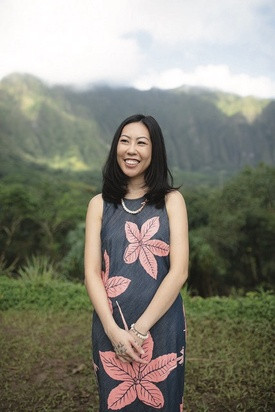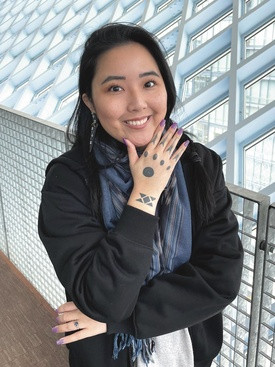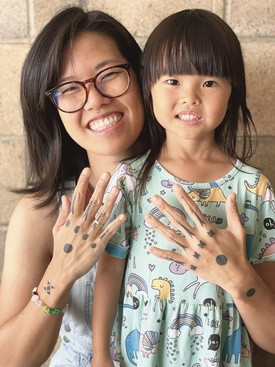Hand tattoos carry a unique allure, a blend of boldness and intimacy. For women, these tattoos can be particularly striking, serving as both a personal statement and a delicate adornment. In the realm of Feminine Hand Tattoos, few traditions are as rich and historically significant as hajichi, the traditional hand tattoos of Okinawan women. This ancient practice, once nearly lost to time, is experiencing a vibrant resurgence, offering a powerful narrative of cultural identity and feminine strength.
Historically, hajichi were far more than mere decorations. Esteemed Okinawan cultural expert, Eric Wada, explains that while the exact origins of hajichi remain undocumented due to their pre-contact beginnings, oral and documented histories reveal their deep significance. These tattoos served as a woman’s rite of passage into adulthood, imbued with profound spiritual connections to genealogy, cosmology, and social status. They were a visual language, etched onto the hands of women, telling stories of heritage and belonging.
However, the narrative of hajichi took a somber turn with the illegal annexation of the Ryukyu Kingdom in 1879 and subsequent assimilation programs imposed by the Japanese government. Wada Shinshï elaborates, “Hajichi was banned and discouraged…which resulted in implementation of assimilation programs by the Japanese government, which brainwashed the native people to be ashamed of their ‘savage’ cultural practices and assimilate to the modern and ‘civilized’ Japanese culture.” This cultural suppression led many Okinawans to feel ashamed of their traditions, including hajichi. The poignant story of one woman’s great-grandmother, who wished to be buried with gloves to hide her hajichi, poignantly illustrates the depth of this imposed shame.
For decades, this beautiful art form faded, becoming so rare that younger generations in Okinawa grew up without ever witnessing hajichi. Yet, in recent years, a remarkable revival has begun. Wada Shinshï offers a cautiously optimistic perspective on this phenomenon: “I am happily cautious about the hajichi resurgence and optimistic because things that have been put to sleep can come back…for the most part, I see more interest in reviving the tradition connected to the deeper spirituality and identity.” This resurgence is not just about aesthetics; it’s about reclaiming cultural identity and heritage.
To understand the contemporary significance of hajichi as feminine hand tattoos, let’s explore the stories of three young Okinawan women who are embracing this tradition in their own unique ways.
Sarah Tamashiro Kuaiwa: Blending Heritage and Personal Meaning

Sarah Tamashiro Kuaiwa, a curator at the Bishop Museum, carries her heritage with grace and intention. While not ethnically Okinawan by birth, her adoptive father’s Okinawan roots deeply influenced her connection to the culture. Sarah’s hajichi are a creative, non-traditional interpretation, blending Okinawan and Hawaiian elements, reflecting her multifaceted identity.
Sarah’s introduction to hajichi came through a book, sparking a surprising and moving revelation within her family. Inspired by Hawaiian tattooing traditions and mentored by tattoo practitioners, she decided to get her own hand tattoos as a commitment to her academic pursuits, family, and community. Her designs, crafted by Hawaiian tattoo artist Keli‘i Mäkua, are deeply symbolic. Her right hand represents her ancestors and “navigating home,” while her left hand embodies the “pursuit of knowledge,” aligning with her career path.
Interestingly, Sarah prefers not to overly publicize her hand tattoos due to instances of design theft, a prevalent issue in indigenous tattoo communities. This highlights the delicate balance between celebrating cultural heritage and protecting personal and cultural artistry.
Rachel Miyazaki: Filling a Void and Honoring Ancestral Roots

Rachel Miyazaki, who is half Okinawan, felt a longing to connect with her Okinawan heritage. Growing up with limited knowledge of her maternal grandparents, Rachel saw hajichi as a way to bridge that gap. In 2019, she received hajichi on one hand as a tangible link to her ancestry.
Choosing the Naha style of hajichi, closest to her family’s origins, Rachel’s design reflects a thoughtful connection to her roots. She acknowledges the varying interpretations of the symbols, such as arrowhead shapes potentially representing “entering paradise” or “women leaving their families after marriage.” Circle shapes might symbolize “a winding thread,” and square-like shapes could represent a “sewing box” or a type of shellfish. Rachel’s experience underscores the ongoing rediscovery and understanding of hajichi symbolism in its revival.
Rachel received her tattoo for free from Jun Osaki, a Japanese American tattoo artist offering hajichi as reparations for the historical harms of Japanese colonization. This act of artistic reparations adds another layer of depth to the revival, acknowledging historical injustices and fostering healing through cultural reclamation.
Mistee Uyehara: A Journey to Okinawa and Embracing Tradition

Mistee Uyehara, who is three-fourths Okinawan, felt a strong calling to receive traditional hajichi. Inspired by seeing hajichi at Okinawan festivals and online, she was deeply moved by the history, meaning, and strength embodied in this women’s tradition. In 2023, Mistee traveled all the way to Okinawa to receive hand-poked hajichi, immersing herself in the cultural heartland of the practice.
Guided by the research of Hajichi artist Moeko Heshiki and discovering her great-grandparents’ origins in Ishikawa Iha, Mistee chose symbols common to the main island of Okinawa. Moeko Heshiki explained the meanings: the circular “Marubushi” or “round star” on both hands, the “Aman” (hermit crab) circle on her left wrist symbolizing ancient times, and the “Ichichibushi” or “five-star” pattern on her right wrist representing “going to paradise.” The “Yainusachi” on her fingers and thumbs signify meeting ancestors in paradise.
Mistee’s experience extends to the next generation. Sharing stories of hajichi with her young daughter, Mai, sparked a heartwarming desire in her daughter to also receive hajichi, highlighting the potential for this revival to resonate across generations and keep the tradition alive.
Conclusion: Hajichi as a Symbol of Feminine Strength and Cultural Revival
Hajichi, as feminine hand tattoos, represent a powerful intersection of personal identity and cultural heritage. Once suppressed and nearly forgotten, these tattoos are now experiencing a vibrant revival, carried forward by women like Sarah, Rachel, and Mistee. Their stories demonstrate how hajichi are being reclaimed and reinterpreted in contemporary contexts, becoming symbols of connection to ancestry, personal meaning, and feminine strength. As the resurgence continues, hajichi stands as a testament to the enduring power of cultural traditions and their ability to inspire and empower women today.